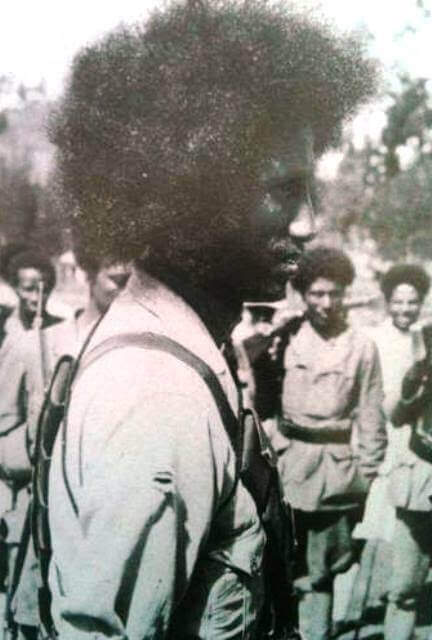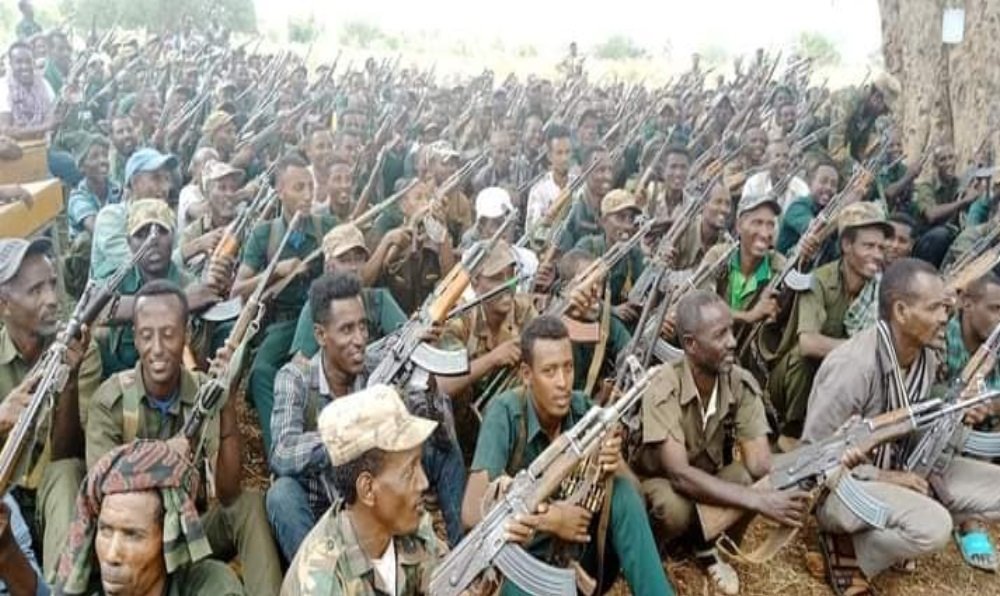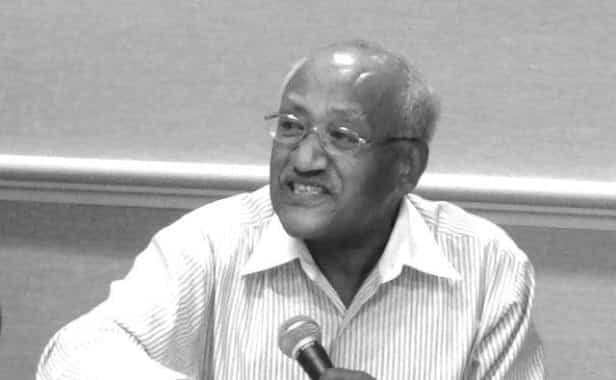BY AGENAGN KEBEDE
The term “Fano” has gained recognition in the military conflict in Ethiopia. In the midst of the 1930s, during Italy’s invasion of Ethiopia, the term took on its established significance.

The term “Fano” has a significant history in Ethiopia’s military struggles, particularly during the Italian invasion in the 1930s. Amhara warriors used the term to refer to volunteers who joined the military to fight against the Italian army. After five years of occupation, Italy was forced to retreat due to the relentless guerilla warfare led by Fano.

Belay Zeleke, an Ethiopian patriot, military leader, and politician, played a crucial role in Ethiopian history during the Italian invasion of the 1930s. Born in 1896 in the Gojjam region of Ethiopia, Zeleke joined the resistance against the Italian occupation and led a successful guerrilla campaign against the invaders.
Zeleke’s bravery and strategic brilliance in organizing resistance movements earned him a reputation as a formidable leader. Operating primarily in the northwestern part of Ethiopia, he orchestrated numerous successful attacks against the Italian forces. His actions inspired many Ethiopians to join the resistance and fight against the occupation.
Belay Zeleke’s legacy endures as a symbol of defiance against foreign aggression and the fight for self-determination. His story serves as a poignant reminder of the sacrifices made by individuals who stood up for their beliefs and fought for the freedom of their nation.
Unfortunately, Belay Zeleke’s capture and subsequent execution during Emperor Haile Selassie’s rule mark a tragic chapter in Ethiopian history. His hanging, carried out under the authority of the imperial regime, highlights the challenges faced by those who resisted centralized power and sought to protect Ethiopia’s sovereignty.

Belay Zeleke’s significance in Ethiopian history cannot be overstated. He is revered as a national hero, celebrated for his unwavering commitment to defending Ethiopia’s independence. His tale continues to inspire Ethiopians, reminding them of the resilience and strength exhibited by their ancestors in the face of adversity. Belay Zeleke’s contributions to Ethiopia’s struggle for freedom will forever be honored, ensuring that his memory lives on as a symbol of resistance and patriotism.
Following Ethiopia’s liberation in 1941, the country underwent various political transformations, from monarchy to dictatorship, from unitary to ethnic federalism, from Ethiopianism to anti-Amhara sentiments, and from conflicts with neighboring countries to internal civil wars driven by power struggles or state-building efforts.
Throughout Ethiopia’s political shifts, the Amhara freedom fighters known as Fano did not actively participate in politics until 2015, possibly due to a variety of factors.
- Secessionists have been subtly promoting ethnic division throughout Ethiopia by employing superficial Ethiopian sentiment. They have acted as freedom fighters, fighting to restore equality and equity in Ethiopia. Accordingly, since 1960, the elites of Amhara ethnic group had trusted them and had been deceived.
- The Amhara elites of 1960 pursued independence, self-government, autonomy, and democracy without realizing the colonial plot involving elites from Tigray and Oromo to bring down Ethiopia; in fact, Ethiopian state construction and continuity have been suffering since the end of the monarchy regime.
- More Amhara elites organized in citizen politics, tying themselves to Ethiopia and rejecting the ethnic political line, which served as the unifying mechanism for other ethnic groups. This parallelized those who understood the coming political sabotage from other ethnic groups against Amhara.
- The political vacuum that was forged by Derg made Amhara not organize as Fano. Derg killed hundreds of thousands of Amhara’s workforce by labeling them anti-government. This causes the generation gap and drives Amhara to not organize as Fano for ethnic protection early.
- The 1991 ethnic federal plan and the 1995 FDRE constitution covertly hold together ethnic groups by narrating Amhara as their common foe. This weakened Amhara politically and economically and made it vulnerable to attack.
- The Ethiopian People’s Revolutionary Democracy Front (EPRDF) leveraged religion to destabilize Amhara while not being a theocracy. Islam was long seen as an ethnic identity in Amhara National Regional State; in fact, the ruling class did not view Islam as an ethnic identity in Oromia National Regional State or as an ethnic identity in Tigray National Regional State.
- From 1991 until 2018, the Tigray People’s Liberation Front (TPLF) operated a powerful, highly centralized government structure, intelligence center, and armed forces.
- As Amhara elites and scholars argued, either members of the non-Amhara ethnic group or Amharas with slave morality constituted the political elites that dominated Amhara for over 27 years. This put up enormous obstacles in the way of Fano receiving consistent backing from local authorities.
From 2015 to 2018, the Fano movement emerged for the second time, challenging the EPRDF and its aristocratic political faction, the TPLF. This movement was fueled by the patronage of the FDRE’s defense force towards Tigray elites, the political fragmentation within the EPRDF, and the Ethiopian people’s demand for political reform.
The prolonged ethnic animosity towards the Amhara, along with economic segregation and the government’s genocidal actions in their ancestral lands of Welkait, Raya, Metekel, and Dera, compelled Amhara youths to secretly mobilize and prepare for a struggle, taking advantage of the political weaknesses within the EPRDF.
In a peaceful demonstration, these youths demanded an end to the ethnic cleansing, genocide, and forced evictions targeting the Amhara community. Unfortunately, the government responded with negativity, resorting to political assassinations, arbitrary arrests, and extrajudicial measures against the youths and those supporting the demonstration. These oppressive actions by the government only further infuriated and targeted the youth, following the government’s instructions.
With this condition, in mid-August 2016, the late Prime Minister of Ethiopia, Hialemariam Desalegn (2012–2018), announced that the FDRE’s defense force’s intervention in the Amhara National Regional State to protect the constitution and bring peace throughout regions since the regions reached the maximum of being unable to manage the crisis by itself.
However, as a result of interventions, unexpected consequences occurred. Many innocent civilians were killed or injured, and many were arrested by the army forces. Conflicts between civilians and civil-military forces increased at an alarming rate.
Following this, Prime Minister Hailemariam Desalegn resigned through internal reform and was replaced by Abiy Ahmed. But since Abiy Ahmmed came to power, the political turmoil has been escalating more than before. Within this condition, targeting and victimizing Amhara has not been ending.
However, Amhara has been fortunate since the November 2022 tragedy. Members of the TPLF established Mekele, the capital of the Tigray National Regional State, as their political hub after formally losing their federal political power. They then mobilized the regional forces to fight the FDRE defensive force, which had established a base in the Tigray Region.
On November 4, 2020, regional forces of Tigray National Regional State attacked an army base under the North’s command. Following this, Abiy Ahmed’s administration reacted and launched a military offensive against the regional forces of Tigray and made an official call for Eritrean forces, Amhara’s militants, Amhara’s Fano, and Amhara National Regional State to support the federal government and become participating actors as military against Tigray forces.
Thereby, Fano forces fought with Tigray forces by supporting the administration of Abiy Ahmed by taking it alliance with Abiy Ahmed as good opportunity to revenge TPLF and restore the fertile lands of Wlkait and Raya. This enables Fano to have strength in the military and to have military skills and experience from 2020 to 2022. In 2022, things changed, and the alliance between Fano and Abiy Ahmed’s administration was breached.
On November 3, 2022, in Pretoria, South Africa, the federal government of Ethiopia and the TPLF officially agreed to a cessation of hostilities. This marked the end of a two-year conflict, and since then, the federal government has been actively involved in resolving economic and political matters for the Tigray National Regional State. However, it is important to note that the government has not adequately addressed the concerns of the Amhara ethnic groups regarding massacres, displacement, damage, and territorial disputes.
After the agreement was reached with TPLF, the Ethiopian Federal Government attempted to disarm dismantle Amhara’s militants, Fano, and the Amhara National Regional State Forces, but it neglected to address Amhara’s concerns or assure Amhara’s protection.
 Since August 4, 2023, the federal government of Ethiopia has declared a state of emergency in Amhara National Regional State and has taken full-fledged military action in conflict with Fano, but still, it has not been possible to bring security to the region.
Since August 4, 2023, the federal government of Ethiopia has declared a state of emergency in Amhara National Regional State and has taken full-fledged military action in conflict with Fano, but still, it has not been possible to bring security to the region.

What are the immediate actions that need to be described in bringing security?
- Withdraw the military and make an accord with Fano in front of foreign negotiators.
- Solving Amhara’s request for political decisions
What are the basic actions that need to be taken to solve the problem at its root?
- Amending the 1995 FDRE’s constitution
- Drafting and adopting laws to prevent Amhara’s ethnic cleansing and killing.
- Allowing Amhara to be represented by its political elites




















Dear Sir!
Thank you for clearing up that it was Haile Selassie, not the Italians, who executed Belay Zeleke.
What is your point? You need to read the Belay Zeleke – Wikipedia story before making assertion about Emperor Haile Selassie I.
Good, but not detailed analysis.
I never knew that patriot Jagema Kello was known by another name also. Boy, I am learning new history everyday.